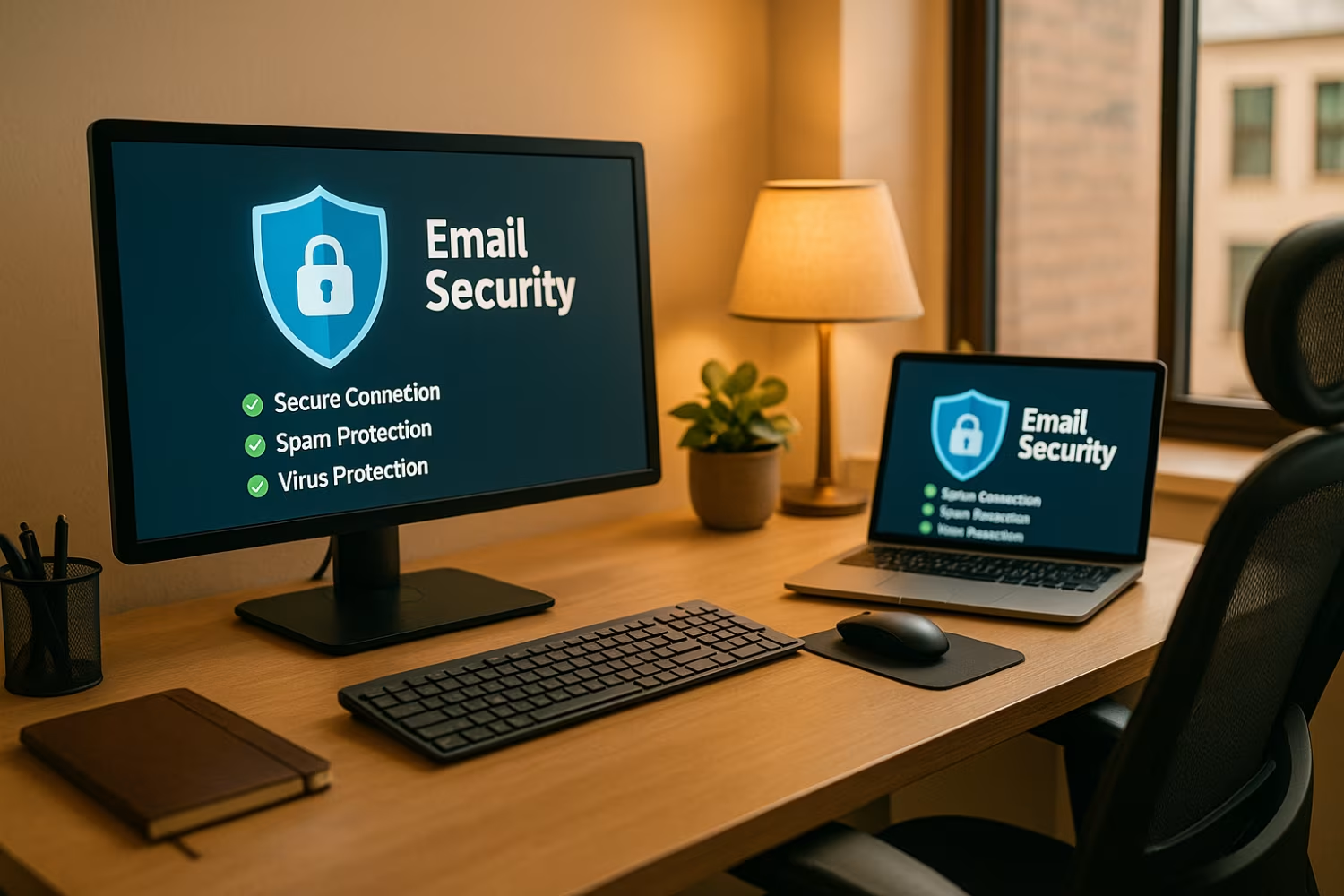3281 E. Guasti Rd, STE 700, Ontario, CA 91761
1712 9th Ave SW, Watertown, SD 57201

Email security solutions are no longer optional—they're essential. With phishing, ransomware, and business email compromise (BEC) on the rise, companies need reliable systems to protect sensitive data. In this blog, you'll learn what makes an effective email security solution, common mistakes to avoid, and how to choose the right tools to protect your business. We’ll also cover AI-powered detection, Microsoft 365 integration, and how to respond to threats in real-time.
Email remains one of the most common ways cybercriminals try to access your systems. Whether it's phishing emails, malware attachments, or impersonation attempts, your inbox is a frequent target. That’s why email security solutions are critical for any business handling sensitive information.
These solutions go beyond basic spam filters. They use advanced threat detection, machine learning, and real-time scanning to block malicious content before it reaches your users. Some platforms also offer secure email gateways, data protection policies, and cloud-based deployment options to support hybrid work environments.
The best email security platforms also integrate with tools like Microsoft 365 and offer visibility into threats across your organization. This helps IT teams detect and respond to incidents faster, reducing the risk of data loss or downtime.

Even with security tools in place, some gaps can leave your business vulnerable. Here are key areas where companies often fall short:
Default filters in email platforms like Microsoft 365 catch basic spam, but they often miss advanced threats. Relying solely on these tools can leave you exposed to phishing and malware.
Even the best email security solution can’t stop a user from clicking a malicious link. Ongoing awareness training is essential to help employees recognize and report suspicious emails.
MFA adds an extra layer of protection. Without it, attackers who steal credentials can easily access your systems. Always enable MFA for email and collaboration tools.
Business email compromise is harder to detect because it often looks like a normal message. Without tools that analyze sender behavior, these attacks can go unnoticed.
Legacy email systems may lack support for current threat detection methods. Upgrading to a modern email security platform improves protection and simplifies management.
If an attack gets through, you need a clear plan to respond. Without one, recovery takes longer and the damage can spread.
Modern email security platforms offer several important advantages:

AI-powered email security is changing how businesses defend against threats. These tools use machine learning to analyze patterns in email behavior, helping detect suspicious messages that traditional filters miss. They can flag impersonation attempts, identify malicious links, and adapt to new phishing tactics in real time.
AI also reduces false positives, so your team spends less time reviewing safe emails. And because these systems learn from every attack, they get smarter over time—giving you stronger protection without constant manual updates.
Choosing the right platform depends on your business size, tools, and risk level. Here are key features to look for:
If your business uses Microsoft 365, make sure your email security solution integrates smoothly. This ensures better visibility and faster threat response.
Cloud-based systems are easier to manage and scale. They also offer better uptime and faster updates than on-premise tools.
Look for platforms that use global threat intelligence. This helps you stay ahead of new attack types and understand the broader threat landscape.
A secure email gateway filters inbound and outbound messages. It blocks spam, malware, and data leaks before they reach your users.
Quick response is key when an attack happens. Choose a solution that includes automated workflows and alerts to speed up your reaction time.
You need to know what threats are being blocked and where they’re coming from. Dashboards and reports help you track trends and improve your defenses.

Rolling out a new email security solution takes planning. Start by auditing your current systems to identify gaps. Then, choose a platform that fits your needs and integrates with your existing tools.
Work with your IT team to test the solution before full deployment. Make sure it doesn’t disrupt normal email flow and that users are trained on any changes. Finally, set up regular reviews to ensure the system continues to meet your security goals.
Keeping your email secure is an ongoing effort. Here are practical steps to stay protected:
Staying proactive helps you respond to threats before they cause damage.

Are you a business with 20 or more employees looking for this solution? If you're growing and need better protection for your email systems, we can help you find the right tools and strategies to stay ahead of threats.
At Trinity Networx, we specialize in helping businesses secure their email and collaboration tools. Our team will guide you through selecting, deploying, and managing the best email security solutions for your needs.
Basic email security usually includes spam filters and virus scanning. While helpful, these tools often miss more complex threats like phishing or impersonation. Advanced email security uses real-time detection, machine learning, and threat intelligence to block sophisticated attacks before they reach your inbox.
Advanced systems also offer better visibility and automated incident response. This means your team can detect and respond to threats faster, reducing downtime and data loss.
AI-powered tools analyze email behavior and patterns to detect threats that traditional filters miss. They can identify phishing attempts, impersonation, and malicious links by learning from past attacks.
These systems adapt over time, improving accuracy and reducing false positives. This helps your team focus on real threats without being overwhelmed by alerts.
Microsoft 365 is widely used, making it a common target for attackers. While it includes built-in security, it may not be enough to stop advanced threats.
Adding a dedicated email protection layer helps block ransomware, phishing, and business email compromise. It also improves visibility and response time for your IT team.
BEC is when attackers pose as trusted contacts to trick employees into sending money or data. These emails often look legitimate and don’t include obvious malware.
To prevent BEC, use tools that analyze sender behavior and flag impersonation attempts. Training your team to recognize suspicious requests is also essential.
A secure email gateway filters incoming and outgoing messages. It blocks spam, malware, and data leaks before they reach your users.
This adds a critical layer of protection, especially for businesses handling sensitive information. It also helps enforce compliance and data protection policies.
You should review your email security setup at least once a year. Threats evolve quickly, and outdated tools may not catch new attack methods.
Look for platforms that offer regular updates and threat intelligence feeds. This ensures your system stays effective against the latest risks.